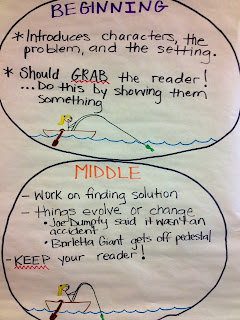The boys and girls really enjoy working on their Young
Author's Day books! We work on them a
little each day and every time we go over the schedule and they see
"YAD" there's cheering J
The kids are strong in their understanding of narrative/expository writing and
it's a treat for me to help them mesh that with their creative ideas and the
process of writing a book.
So far we’ve covered the planning stage where each child
developed their ideas and drew out a “story map” that included characters,
setting, a problem, and lose ideas about what happens in the beginning, middle,
and end (ask your kiddo where they may end up if they go on a road trip without a map…)
J
Next we dove into how to begin a story and what the
beginning should do. We’ve read and
discussed several books as a part of this process including “What Really
Happened to Humpty?” and “A Book For Bramble”.
We have also discussed what happens in the middle of
stories, and what good authors do to keep a reader’s attention. Part of the analogy we’re using is “it’s not
very useful to catch a fish if you lose it while trying to reel it in”. You can “lose a fish” by adding too many
details, changing too many things, or just the opposite. We’re currently in the middle of our Young Author’s Day rough drafts and I can’t tell you how proud I am of how far your 3rd grader has come with their writing. They are really stepping up to the challenge and I can’t wait for the finished products!



.JPG)


.jpg)